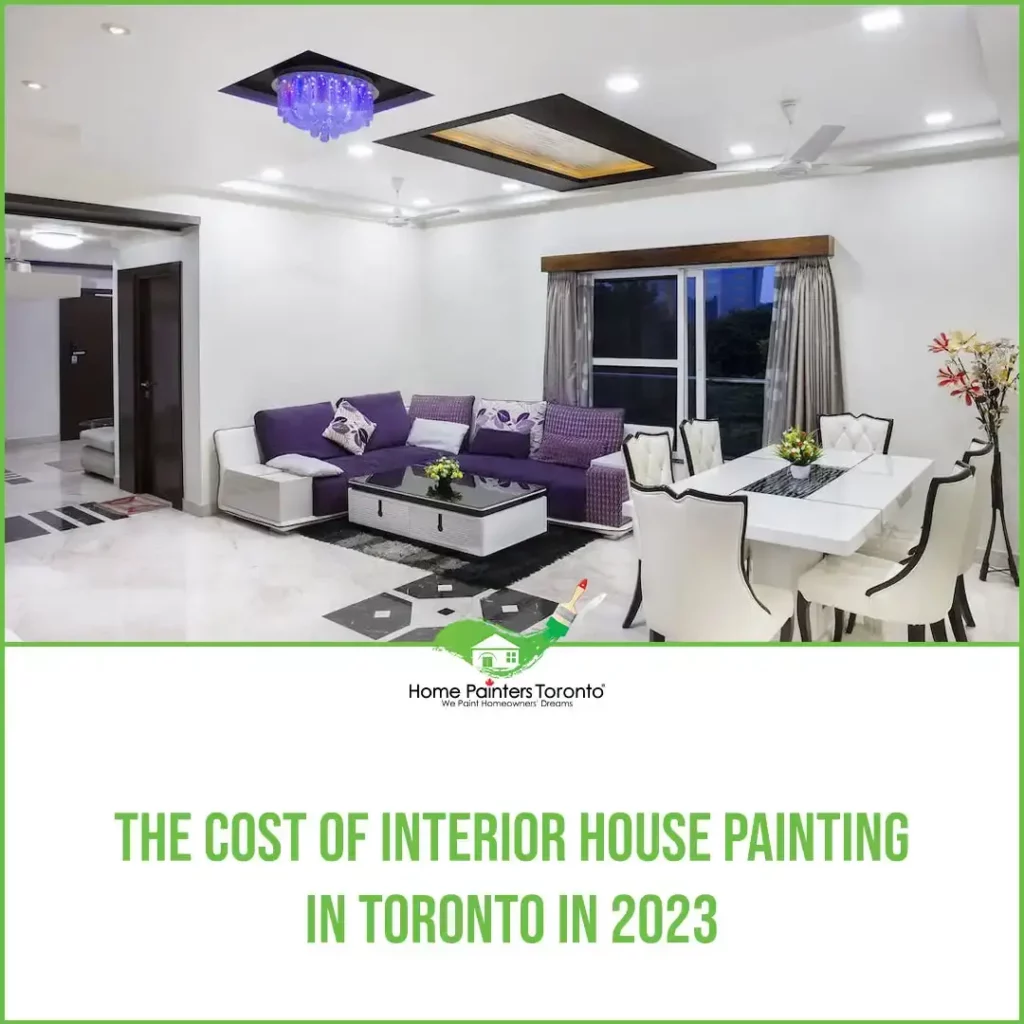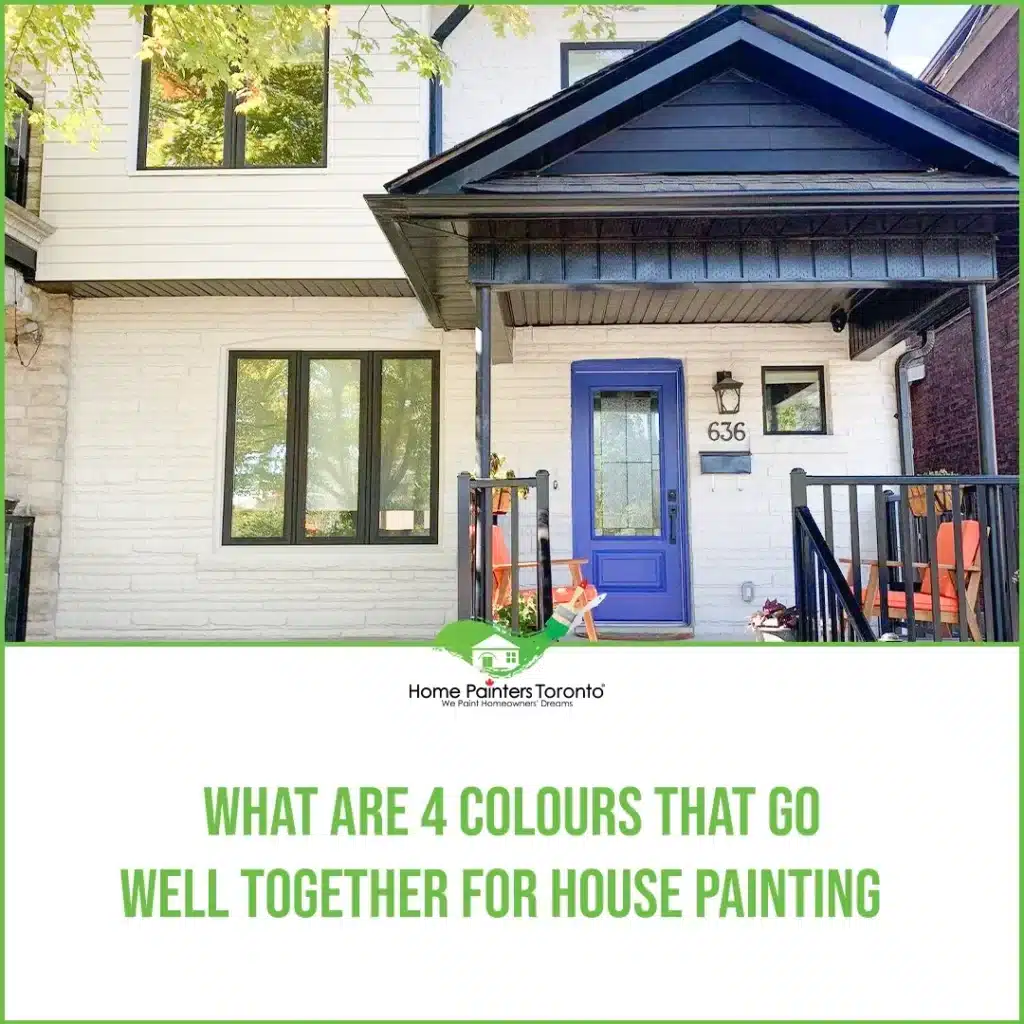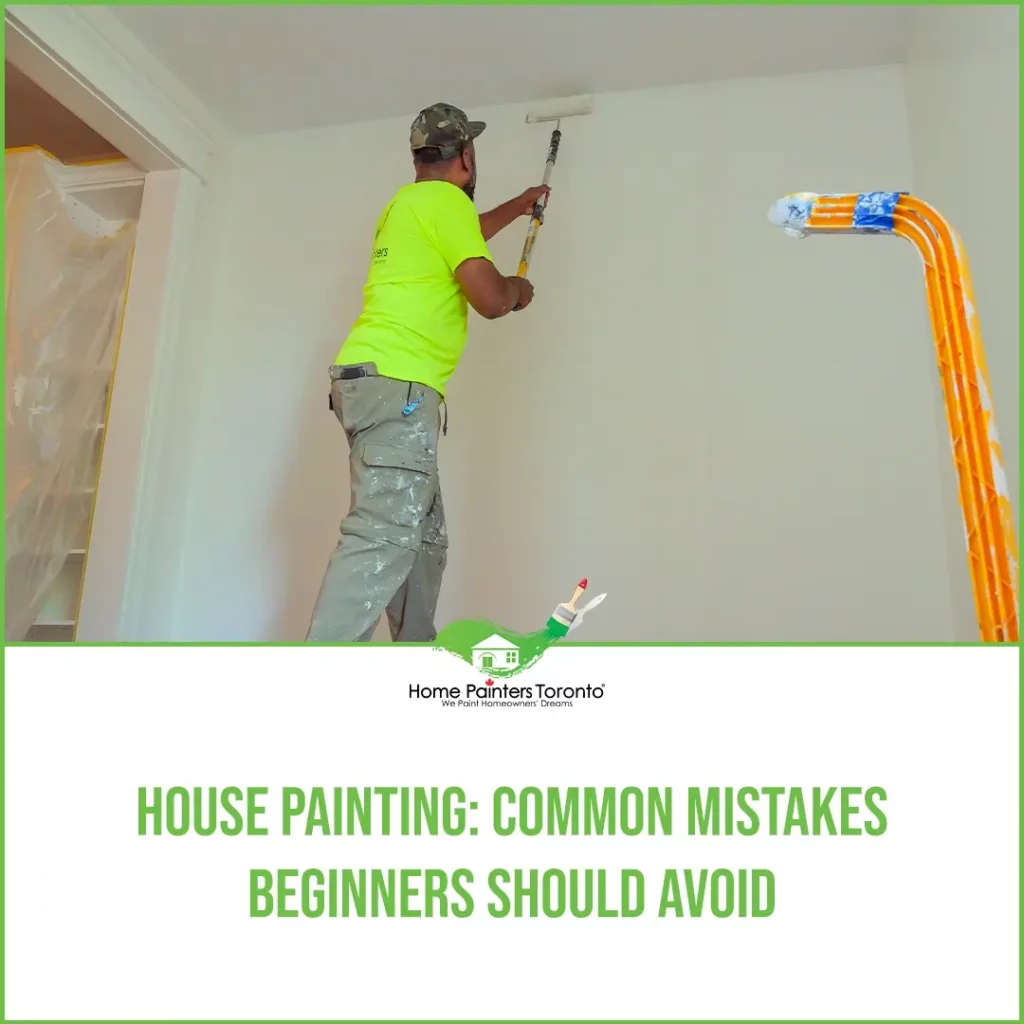
Congratulations, you have just recently purchased a new house! This is no small feat, and you should feel proud. However, novelty homes still require a great paint job. You may think that painting a new house is similar to painting a home with mileage, but this is unfortunately not true.
New house painting requires more work and care to get your new dream house in order. Below are some common questions new homeowners have in regard to painting.
How much does it cost to paint a new house?
This is a common question asked by individuals eager to hire a contractor and get the job done. Unfortunately, there is no actual median for new house painting. Instead, you will have to get out the calculator and do some simple math to determine the cost.
Do not worry. I would not waste your time by giving you a cop-out answer like that. Keep on scrolling; you’ll find the numbers you need to add up for a new house painting project.
How much does it cost to paint a new house interior?
Sorry to break it to you. There is no definitive price for a new house painting for the interior. Several factors affect the cost that you can use to gauge the amount. Remember, not one home is the same, so finding common ground amongst your peers may be difficult.
- The square footage of your new home will be the most crucial factor for determining cost. 1200 square feet homes will range from $5700-$7500, 1600 square feet goes from $6,500-$10,000, 2500 square feet starts at $9000-$13,000 and 3000 square feet houses go for $11,500-$16,000.
- The amount of prep involved. Since you are working with a new house, there will be more prep to get things right the first time. Unfortunately, this will add to the initial cost depending on which company you use. Try to negotiate kindly but do not get your hopes up for this new house painting job.
- The time frame will affect the cost. If you want the job done quicker, well, it will inevitably cost you more. Paint companies will have to send in more workers to get the job done. The formula more labour a heftier price tag is applicable here.
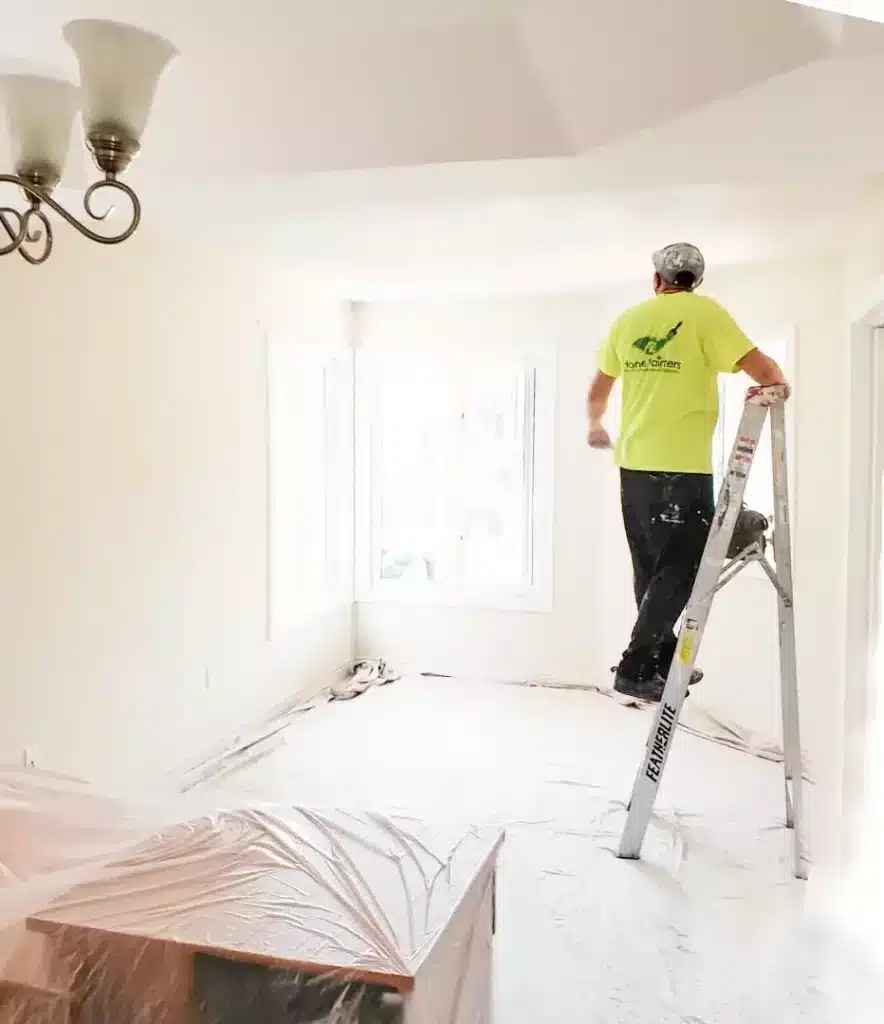
How much does it cost to paint a new house exterior?
The exterior of a new home needs extra care with its paint job. The exterior house painting price range will differ from an older home because of the extra caution and prep needed by the painters when starting. It also depends on what kind of exterior it is when calculating the cost of a new house painting.
1. Exterior brick is begging to be stained instead of painted:
- 800-1200 square feet will start at around $4000 and can go up to $7000.
- 1500-2500 square feet will be a low of $6000 to $8000, with a high of $10,000- $15,000.
- 3000+ square feet start from the $8000-$10,000 range and can be as high as $12,000 to $20,000.
2. Exterior stucco siding:
- 800-1200 square foot homes start at the $4000-$5000 range and spike up to $6000-$8000.
- 1500-2000 square foot base price is around $4000-$5000, for higher-end it will be $8000-$12,000.
- 2500-3000+ square foot homes begin at the $15,000 range and can be as high as $25,000.
3. Exterior vinyl and aluminum siding:
- 800-1200 square foot homes start from $2000 to $5000 for exterior vinyl and aluminum sidings.
- 1500-2000 square foot homes range from $3000 to $7000.
- 2500-3000+ square foot homes will equal around $5000 and go up to $10,000.
4. Exterior wood siding:
- 800-1200 square foot homes start from the $2000 to $5000 range.
- 1500-2000 square foot homes start at $3000 and go up to the $7000 mark.
- 2500-3000+ square foot houses begin $5000-$1500.
Now, remember, these are ballpark numbers for regular homes. As mentioned earlier and will further be stressed throughout this post, new house painting will cost more due to prep. So, brace yourself for some additional charges with these numbers as painters have to be precise for your new forever home.
How long does it take to paint a new construction house?
New construction homes do require more work but not as much as one would think. You may be eager to have your new house painted within one day, but this is highly unlikely unless you hire multiple contractors (don’t do this).
Again, your home’s size will affect not only the cost but also the amount of time needed.
- The time frame for an interior paint job for new construction ranges from 2-4 days.
- An exterior paint job ideally will take 3-5 days.
- The amount of workers a contractor brings is the wild card here. The less staffing for the job, the longer the wait time.
Can you paint the walls in a new house?
This is a common myth within the painting world. Many people believe that painting walls in a new house before moving in will ruin your walls. This is not true! You want to steer clear of wallpaper and other accessories for your new walls, yes, but breathable and top-of-the-line paint will not harm you.
Benjamin Moore and Sherwin-Williams offer a vast selection of quality paints that you cannot go wrong with. Stick with brands that have lasting reputations compared to newer brands with seemingly better deals. If it is too good to be true, then it most likely is.
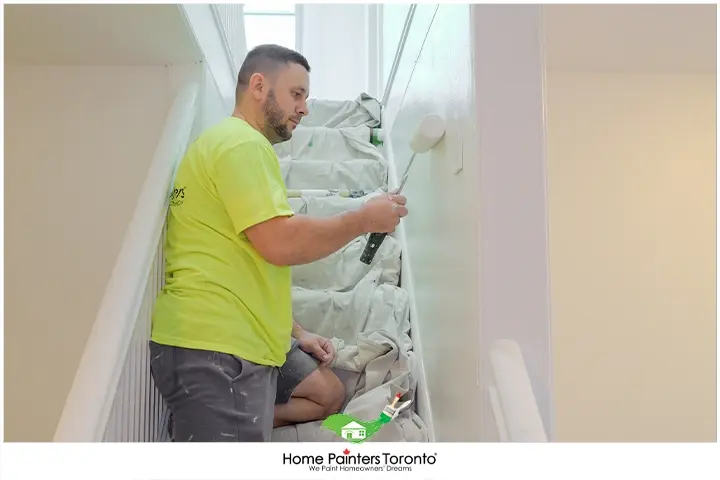
How do you paint a newly built house?
- Sand all imperfections. Even though it is a new house, it is not objectively perfect. Look for uneven parts and smooth them out.
- A primer must be applied. This allows for the fresh new paint to bond more seamlessly with the new surfaces.
- 2 or 3 coats of paint will be mandatory. The 3rd coat of paint is a precaution to ensure the colour looks pristine and fresh for its brand-new surface.
- Clean all spills or blemishes. Usual for any paint job, let alone a newly built house.
- Of course, allow the paint to dry. Kick back your feet and enjoy the process. You are now ready to tackle this gigantic but exciting task of painting a new home!
Choosing the Right Paint for Your Home
Selecting the perfect paint can feel overwhelming with the countless colours, finishes, and brands available. Here’s a breakdown of the key factors to consider:
- Colour: Choose colours that complement your furniture, flooring, and overall design aesthetic. Light colours can open up small spaces, while bold or dark hues can create a dramatic look. Don’t be afraid to experiment – many paint retailers offer sample-sized quantities, perfect for trying out colours before committing.
- Finish: Select the right finish for each room. Matte or flat finishes hide imperfections but are less resistant to cleaning, making them better suited for low-traffic areas like bedrooms. Satin and eggshell finishes strike a balance between durability and subtlety, ideal for living rooms and hallways. Semi-gloss and gloss finishes stand up to moisture and frequent cleaning, making them perfect for kitchens, bathrooms, and kids’ rooms.
- Quality: Investing in high-quality paint ensures better coverage, longevity, and easier application. Opt for low or zero-VOC (volatile organic compound) options, which give off fewer harmful emissions and yield a more pleasant experience for you, your family, and the environment.
Preparing Your Space for Painting
Before applying that first stroke of colour, it’s essential to properly prep your home to achieve a smooth and lasting finish.
- Clear the space: Remove or cover furniture and any wall hangings, and lay down drop cloths to protect your floors from drips and spills.
- Clean: Wipe down walls, ceilings, and trim to remove any dust, dirt, and grease that could interfere with paint adhesion.
- Repair: Inspect surfaces for holes, cracks, or dents, and patch as needed with joint compound or spackle. Allow the repairs to dry, then sand the area smooth.
- Mask: Use painter’s tape to mask off baseboards, trim, and other areas you don’t want to be painted. Don’t forget to cover outlets and switches.
- Prime: Apply a coat of primer to ensure optimal paint adhesion, colour accuracy, and longevity. Priming is especially crucial for new construction painting sequences, freshly patched areas, or when significantly changing wall colours. Allow the primer to dry based on the manufacturer’s recommendations.
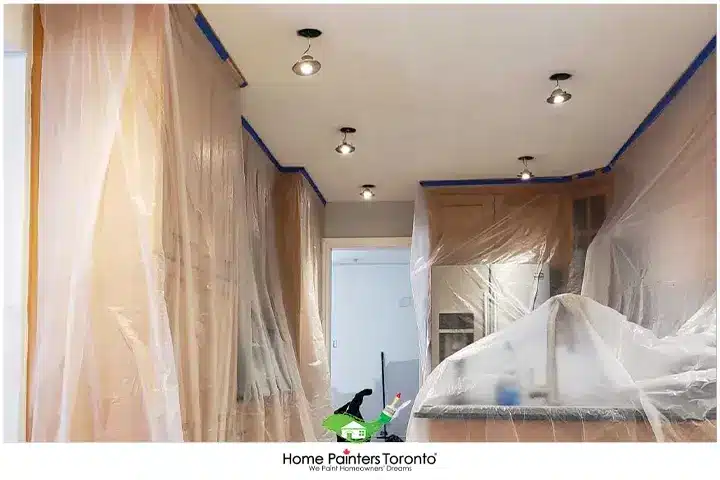
Tips for a Flawless Application
Now that your space is primed and ready, follow these tips for achieving the perfect painting results:
- Choose the right tools: Select brushes or rollers appropriate for your desired finish and the paint type you’ve chosen. Synthetic brushes work well with latex and water-based paints, while natural bristle brushes are better for oil-based paints. For rollers, opt for a 3/8-inch nap for smooth surfaces or a longer nap for textured surfaces.
- Mix your paint: Consistency is key, so make sure to stir your paint thoroughly before starting. If you have multiple cans of the same colour, combine them in a larger container to ensure uniformity.
- Paint in the right order: Start painting from the top down, beginning with the ceiling. Next, tackle the walls, followed by any trim, doors, and windows. This order will help catch any drips and minimize the need for touch-ups.
- Apply multiple coats: For most projects, two coats of paint provide optimal coverage, richness, and longevity. Allow each coat to dry thoroughly (typically 2-4 hours, depending on the paint) before applying the next coat.
- Practice good technique: Use long, even strokes, and don’t overload your brush or roller. Ensure ample drying time between coats, and resist the temptation to overly manipulate the paint.
Caring for Your New Paint Job
To ensure your new paint job stays looking fresh and beautiful, prioritize regular maintenance:
Cleaning: For most surfaces, especially when painting outside of house colours, mild soap and water will do the trick. Avoid using harsh chemicals or abrasive materials that could damage your finish.
Touch-ups: If you need to touch up small scratches or scuffs, use a small brush and take care to feather the edges for a seamless blend with the surrounding area.
Inspection: Conduct an annual inspection of your home’s exterior paint to identify and address early signs of peeling, chipping, or fading.
CONCLUSION
A new house painting project can breathe new life into your living space, adding value and expressing your unique taste. By taking the time to select the right paint, properly prepare your space, and follow best practices for application and maintenance, you’ll create a stunning result that will endure for years to come.
Investing the time, effort, and attention to detail in a home painting project can yield fantastic results and instill a sense of pride in your living space. However, if time is not on your side or you prefer a stress-free experience, don’t hesitate to enlist the expertise of professional painting companies like Home Painters Toronto. Their skilled team can transform your home, ensuring your vision becomes a reality with a top-notch paint job that will last for years to come.
TOP interesting blogs related to
“EVERYTHING TO KNOW ABOUT NEW HOUSE PAINTING”
Here at Home Painters Toronto, we have over 36 years of experience. If you are unsure of which contractor to hire, look no further; check us out! Please give us a call at 416.494.9095, or email us at Brian@HomePaintersToronto.com. Also, don’t forget to follow us on all our social channels below as well!


